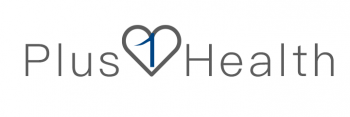1. Snoring. That is what we usually call snoring, which is medically called obstructive sleep apnea hypopnea syndrome (OSAHS) , insomnia, fatigue, emotional disorders, etc.
2, Narcolepsy. Mainly manifested as uncontrollable drowsiness, cataplexy, sleep paralysis (commonly known as ghost press), sleep hallucinations and nighttime sleep disturbances. In addition to the medical history, the diagnosis of the disease requires multiple sleep latency experiments (also known as nap experiments). However, prior to this examination, overnight sleep monitoring during the patient’s habitual sleep period should also be recorded to aid in the diagnosis.
3. Parasomnia. Refers to involuntary somatic actions or experiences that occur during falling asleep, during sleep, or upon awakening from sleep. According to the different sleep stages, parasomnias are divided into four categories in ICSD-3 (International Classification of Sleep Disorders) in 2014: Among them, REM (rapid eye movement) stage parasomnia requires continuous long-term sleep monitoring to be diagnosed, parasomnias in NREM stage are more well-known as sleepwalking (commonly known as sleepwalking), which can be supplemented by overnight sleep monitoring.
4. Insomnia. Insomnia is the most common sleep disorder in clinical practice. Patients often complain of difficulty falling asleep, waking up easily in the middle of the night, insufficient sleep time or poor sleep quality. In fact, some insomnia patients are not really insomnia. We are also not easy to judge, we have to rely on data to speak, so we need to evaluate the real sleep situation through sleep monitoring throughout the night. There are also patients with insomnia and OSAHS who also need sleep monitoring.
5. Sleep-related movement disorders. For example, sleep-related teeth grinding, restless lower limb syndrome, periodic limb movement disorder, etc., all of which need to be supplemented by our overnight sleep monitoring to help clinicians make correct diagnosis and treatment opinions.
6. Chronic obstructive pulmonary disease-related sleep disorders. A survey of 20,245 people in my country by some scholars shows that the prevalence of chronic obstructive pulmonary disease (COPD) in people over 40 years old is 8.2%. COPD combined with OSA is called overlap syndrome. Continuous long-term sleep monitoring in COPD patients can help identify patients with overlapping syndromes in which COPD and OSAHS coexist.
The sleep recorder of Plus1Health can monitor sleep conditions continuously for a long time all night, with accurate monitoring data and timely and accurate reports.
